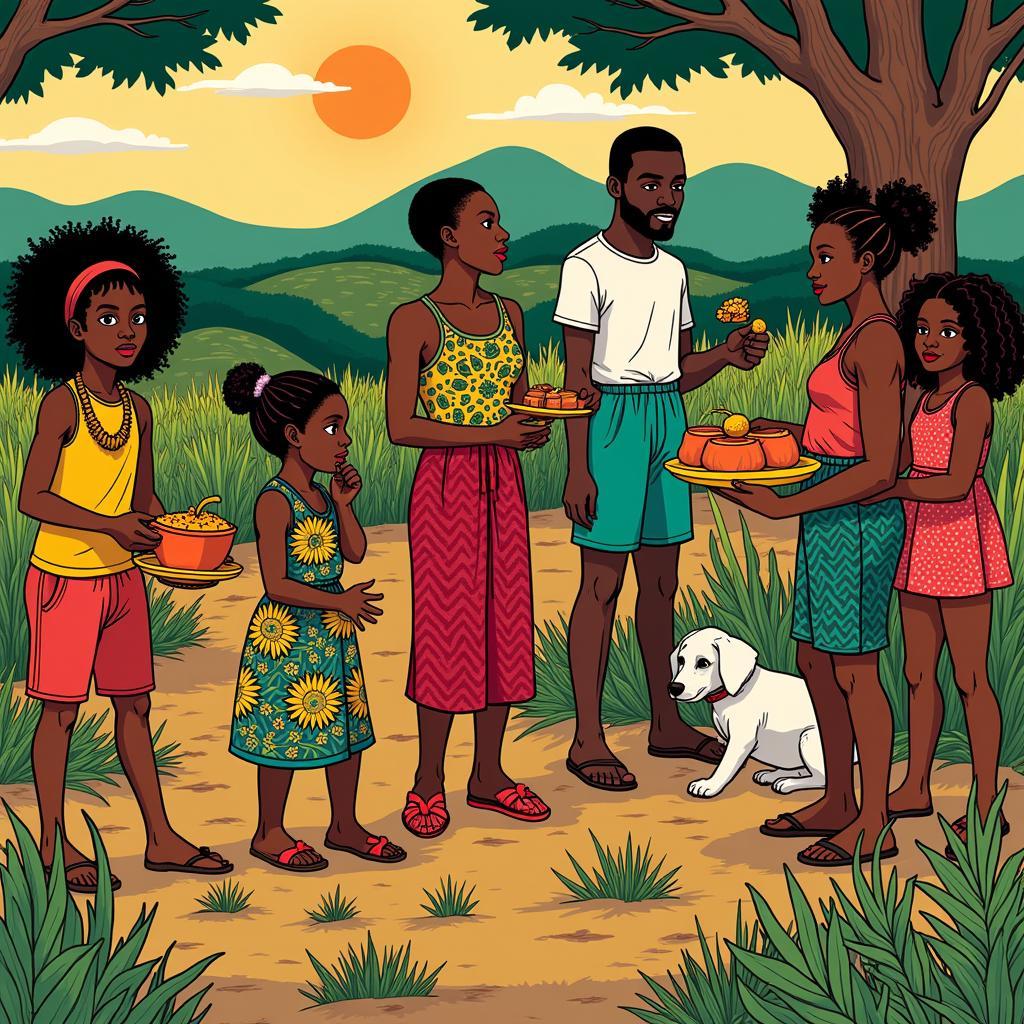Unveiling African American Theatre Facts
African American Theatre Facts reveal a rich tapestry of artistic expression, resilience, and cultural impact. From its roots in minstrel shows to the rise of prominent playwrights like August Wilson, this vibrant theatrical tradition has powerfully reflected the African American experience, challenging social norms and celebrating Black identity.
The Genesis: From Minstrelsy to Authentic Voices
Early African American theatre, unfortunately, began with the shadow of minstrelsy, where white performers in blackface caricatured Black people. This racist form of entertainment distorted Black culture and perpetuated harmful stereotypes. However, even within these confines, Black performers began to emerge, carving out spaces to reclaim their narratives.
What were the early forms of African American theatre? Beyond minstrelsy, Black artists developed jubilee singing, drawing on spirituals and gospel music, and began creating their own theatrical companies. These early efforts laid the groundwork for a more authentic and empowering representation of Black life on stage.
The Harlem Renaissance: A Flourishing of Creativity
The Harlem Renaissance of the 1920s and 1930s marked a pivotal moment for African American theatre. This era saw an explosion of creative talent, with playwrights, actors, and musicians exploring themes of Black identity, racial injustice, and the joys and sorrows of everyday life. a history of south african li offers a parallel glimpse into another flourishing artistic movement, albeit in a different geographical context.
Key Figures of the Harlem Renaissance Theatre
Notable figures of this period include Langston Hughes, Zora Neale Hurston, and Wallace Thurman, whose plays offered nuanced and complex portrayals of Black characters, challenging the prevailing stereotypes of the time. This period also witnessed the founding of important Black theatre companies, providing platforms for Black artists to tell their own stories.
What was the significance of the Federal Theatre Project? The Federal Theatre Project, a government initiative during the Depression, played a crucial role in supporting Black theatre, providing funding and resources that allowed Black artists to reach wider audiences.
Post-War Theatre: Confronting Social Injustice
Following World War II, African American theatre continued to evolve, tackling the pressing social and political issues of the day. Playwrights like Lorraine Hansberry, whose groundbreaking play A Raisin in the Sun debuted in 1959, brought the realities of Black life in a segregated America to the mainstream stage.
The Black Arts Movement: A Call for Revolution
The Black Arts Movement of the 1960s and 70s further amplified the voices of Black artists. This movement embraced Black aesthetics and advocated for social and political change through art. african american tours new york city can provide context for understanding the social and cultural landscape that fueled this artistic revolution.
The Legacy of August Wilson: Chronicling the Black Experience
August Wilson, a towering figure in American theatre, dedicated his career to chronicling the African American experience throughout the 20th century. His ten-play cycle, each set in a different decade, captures the struggles, triumphs, and dreams of Black Americans.
Dr. Anika Toussaint, a theatre historian, notes, “Wilson’s plays not only captured the specific historical contexts of each decade but also explored universal themes of family, identity, and the search for belonging.”
Contemporary African American Theatre: Diverse Voices and Perspectives
Today, African American theatre continues to thrive, showcasing a diverse range of voices and perspectives. Playwrights like Lynn Nottage, Tarell Alvin McCraney, and Branden Jacobs-Jenkins are pushing the boundaries of theatrical form and exploring contemporary issues relevant to the Black community. african arts magazine back issues provides valuable insights into the evolving landscape of Black artistic expression.
What are some current trends in African American theatre? Contemporary Black theatre is increasingly exploring themes of intersectionality, Afrofuturism, and the complexities of identity in a globalized world.
Conclusion: The Enduring Power of African American Theatre
From its challenging beginnings to its vibrant present, African American theatre facts demonstrate its enduring power to educate, entertain, and inspire. It remains a vital force in American culture, amplifying Black voices and shaping our understanding of the past, present, and future.
Professor Kwame Asante, a scholar of African American studies, observes, “African American theatre is not just about telling Black stories; it’s about telling stories that are fundamentally American, stories that speak to the core of our shared human experience.”
FAQ
- What is the significance of the Chitlin’ Circuit?
- Who are some influential Black theatre directors?
- What are some resources for learning more about African American theatre?
- How has African American theatre influenced other art forms?
- What is the role of music in African American theatre?
- How has technology impacted African American theatre?
- What are some challenges facing Black theatre artists today?
Need more information? Explore related topics on our website, such as the history of African American music and the impact of Black artists on visual arts.
For support, contact us at +255768904061, [email protected] or visit Mbarali DC Mawindi, Kangaga, Tanzania. We offer 24/7 customer service.

